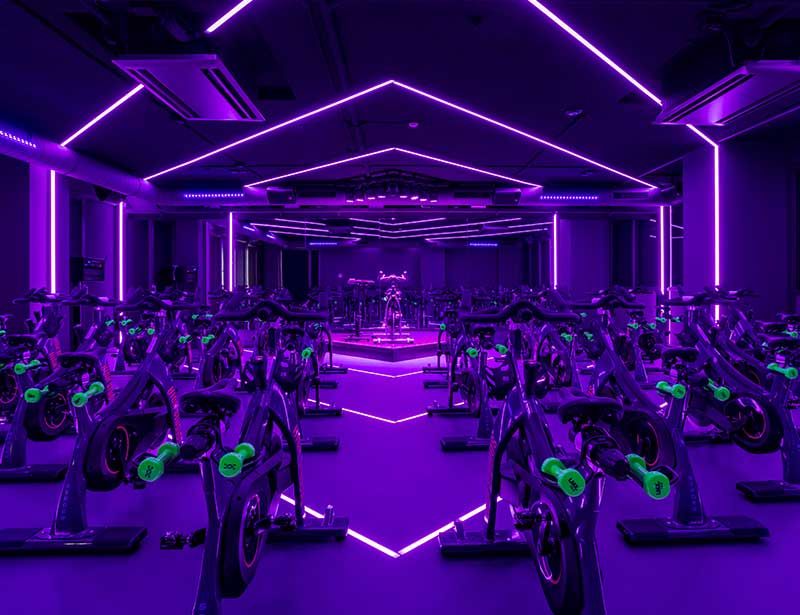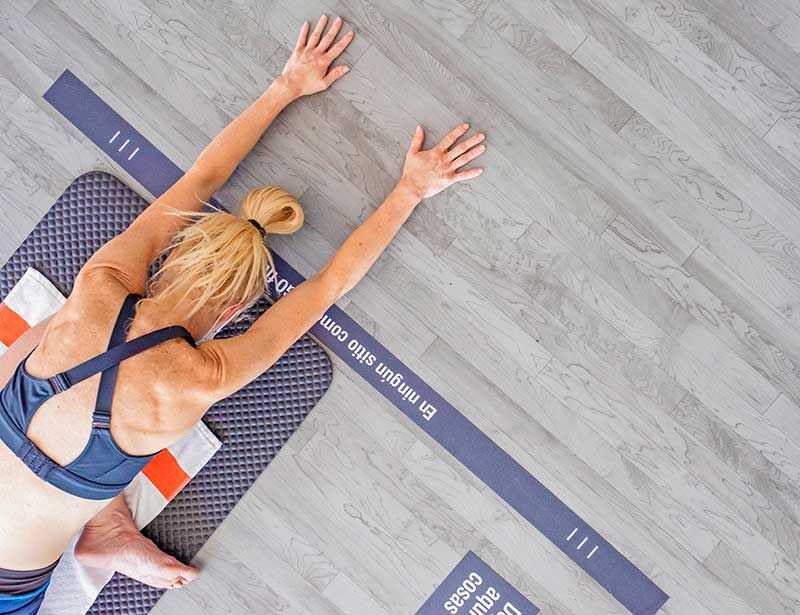Fitness Technology
Mobile vs Console
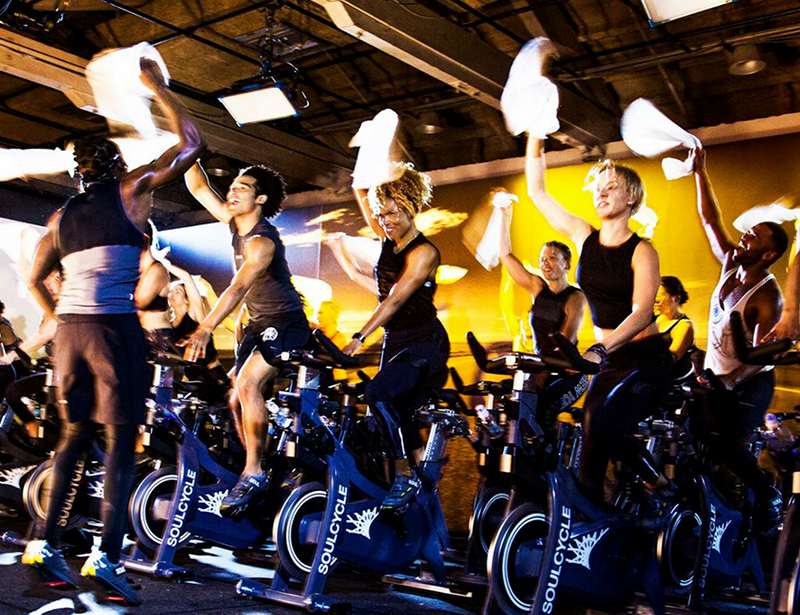
Motosumo: A mobile democracy
“We don’t see our app totally replacing consoles,” say Allan Steen Olesen and Kresten Juel Jensen, co-founders of Motosumo. “However, we do believe it’s time to do things differently in indoor cycling, and consoles just can’t match what you can do on a smartphone any more, either visually or in terms of interaction, gamification and social connection.
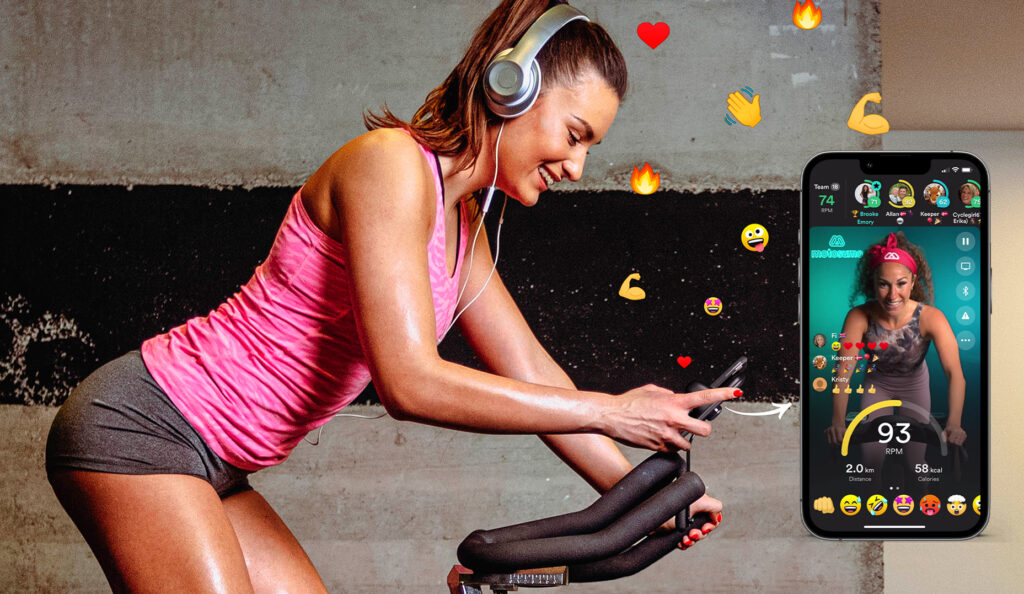
“Behaviours also continue to evolve. When we launched in 2017, people said members would never bring their phones to the gym: that clubs and instructors wouldn’t allow it. Now it’s normal: we have over 300,000 people signed up to Motosumo and most use it in the gym, while instructors are the ones onboarding people so they can use our app to make classes even more fun.”
“It’s time to do things differently in indoor cycling. Consoles just can’t match what you can do on a smartphone any more”
So what is Motosumo? An open platform for gyms, instructors and members, it’s based on a hardware-agnostic smartphone app that connects to any make or model of stationary bike to unlock a premium experience – however entry-level the bike itself. The idea: “To make it easier to deliver interesting, data-driven indoor cycling experiences.”
On a smart bike, Motosumo connects via Bluetooth, with the bike’s sensors sending their usual data to the app. On other bikes, you place your phone on the handlebars and the vibration from the bike feeds through the phone’s accelerometer and gyroscope to be translated into cadence, distance and calories. How accurately? “Very: we’re talking +/- one or two RPM.”
Additional data can be drawn into the app by connecting to an external heart rate monitor or power meter.
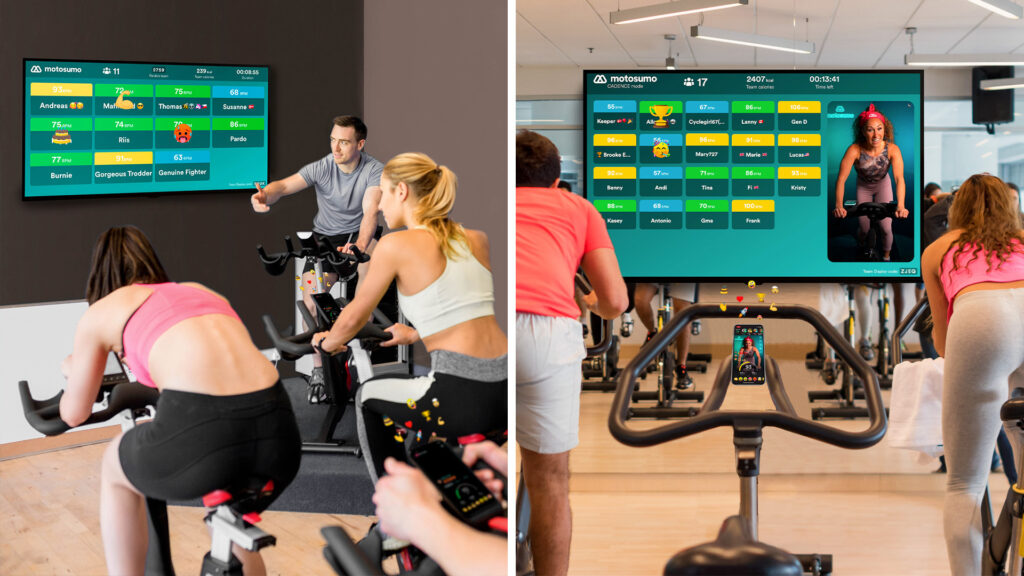
But Motosumo does more than data: it also connects bikes – and their users – into one shared social experience. Simply create a group, invite riders to join and you’re all in there together, taking part in real-time races, leaderboards and charity team challenges.
It gives in-person instructors a raft of new motivational tools, but it’s also great for clubs’ live streams. These can flow through the usual channels – Instagram or Facebook Live, for example – but with Motosumo added to the mix, instructors can see members’ workout data and interact in real time with a personal touch. There’s lots of scope for feedback via polls and emojis, too: “Ask everyone how they’re feeling – if you get lots of red faces back, you know they’re working hard – or launch a poll to see who’s up for a race.”
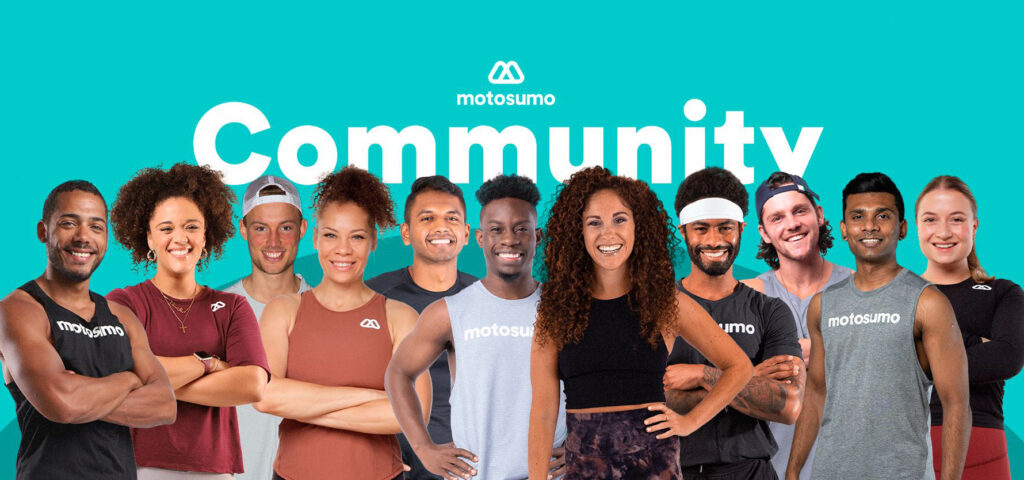
Motosumo’s own classes, live streamed around the clock from various global locations, are equally interactive and require nothing more than a Chrome browser to cast to a big screen. Clubs can therefore use these to maximise off-peak studio occupancy, offering an engaging experience where people across the globe can ride together. Data shows those doing live classes stay two to three times longer than those doing on-demand.
And since November 2022, all of this is free to gyms as well as end users. “It’s perfect timing in the evolution of our business model,” say Olesen and Jensen. “At a time of economic challenge, we’re bringing operators exactly what they want, at no cost. We have hundreds of clubs waiting to be onboarded.”
“Some manufacturers seem happy. Others seem nervous they may need to sell their bikes at a lower premium.”
And how are bike manufacturers responding? “It’s 50/50. Some seem happy they can get rid of the electronic complication of consoles, but others seem nervous they may need to sell their bikes at a lower premium.
“As we say, we aren’t trying to replace consoles, but by making this level of experience available to everyone with a phone, it’s fair to expect that manufacturers’ bread-and-butter models may be console-free in the not too distant future.”
BODY BIKE: The phone is the future
“Just look at everything we now do via our mobile phones,” says Vinni Hansen, R&D project manager at BODY BIKE International. “We pay through it, track our steps on it, verify our identity through it. Your phone is now you, to the point that it’s hard to be away from it even for an hour these days. From an exerciser perspective, it makes real sense to move away from consoles and towards mobile phones.”
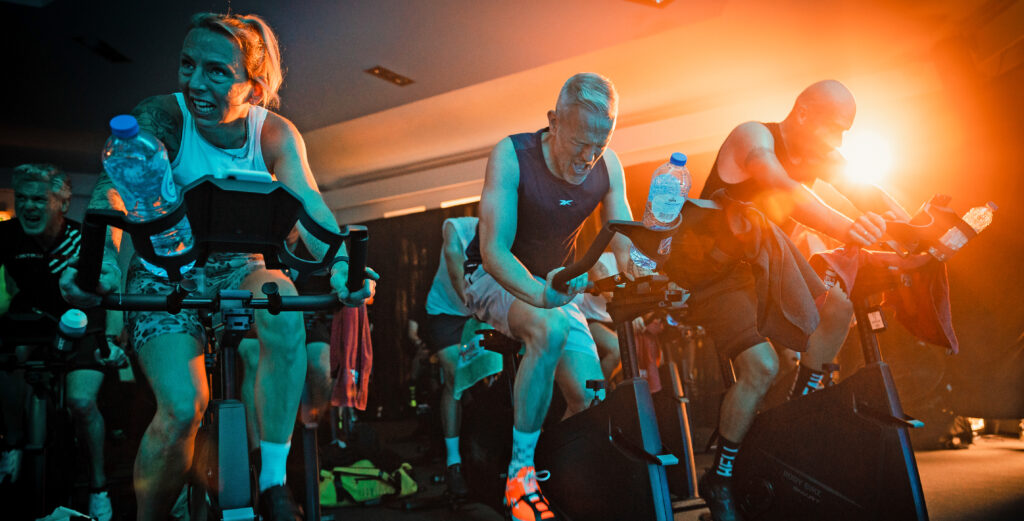
She continues: “It makes sense from an operator perspective, too. You no longer have to pay a premium for a bike with a hi-tech console, and what you buy is future-proofed: there’s no console to maintain, service or go out of date. It’s the member who provides the technology, and with each new app update, the experience is instantly upgraded.”
“As an operator, what you buy is future-proofed. The member provides the technology. Each new app update instantly upgrades the experience.”
It was this thinking that led BODY BIKE to do away with integrated consoles six years ago. Instead, BODY BIKE Smart+ bikes use Bluetooth to link to a BODY BIKE app, transforming exercisers’ own mobile phones into portable consoles.

Hansen continues: “The fact that exercisers get to take their data away with them at the end of class is probably the most important thing for us. It matters for two reasons, the first of which is about motivation and tracking. All your workout data is instantly there in your phone, including an excellent end-of-ride summary that includes average wattage – the key measure of how hard you’ve worked. You can also instantly check your history to monitor your progress.
“We don’t collect or sell data, ever. It’s the individual’s choice where and how their data is stored and shared.”
“The second is privacy. We talk about ‘your ride, your data’, because with BODY BIKE, your data is private. We don’t collect or sell any of it, ever. You can share it if you choose: there’s an option to upload it directly to Strava, while all it takes is a quick screenshot to show friends what you’ve done. But equally, we believe it should be the individual’s choice where and how their data is stored and shared.”
A personalised user experience is another key benefit of using an app: “Do an FTP test through our app and all the zones in your subsequent workouts will be geared to you rather than to default settings. You can work towards status achievements and medals in our app, too, which is a really popular feature.
“In a future release, you’ll also be able to choose which metrics matter most to you, whether that’s calories for weight loss or wattage for power training. Those stats will then appear big and bold on your personalised dashboard.
“Which brings us to the enhanced display on a phone: a far more engaging, motivating UX than you get on a console, with wonderful clarity, detail and brightness of colour.
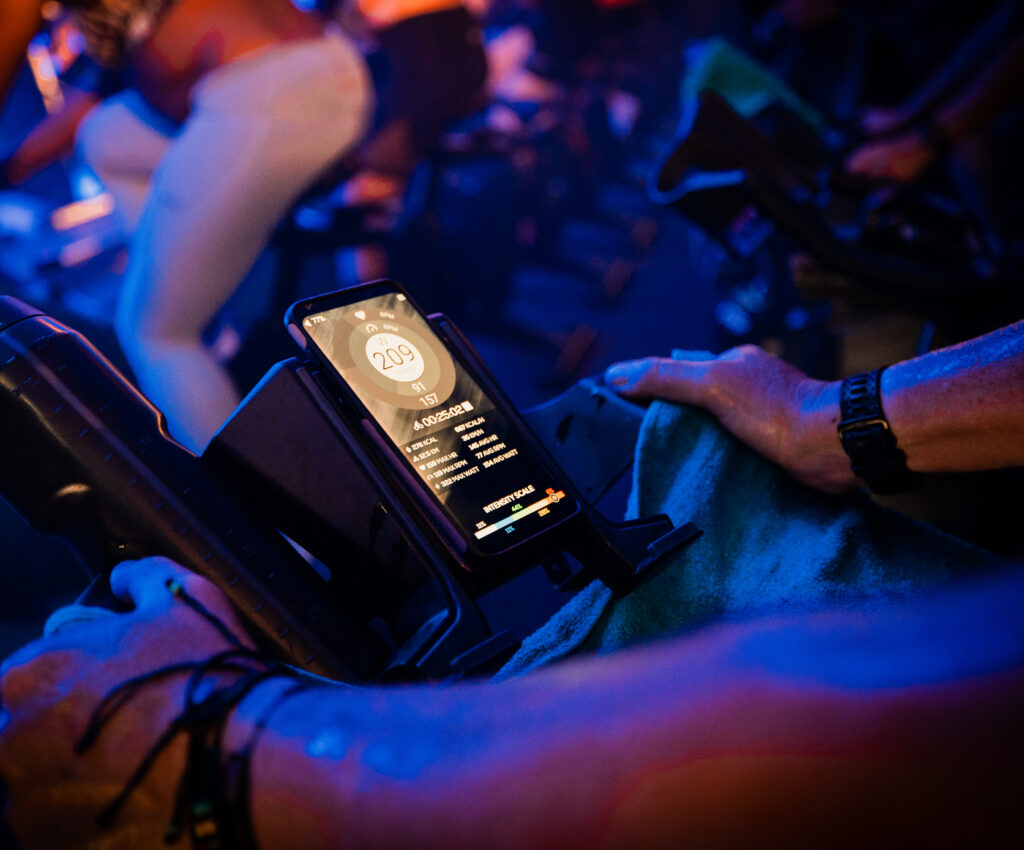
“A phone screen is also backlit – even in a dark studio you can always see it clearly – and on our bikes you can charge your phone as you ride, with the power you put through the pedals converted to electricity. The downside: yes, you might see an SMS come through while you’re working out. But the positives for both club and exerciser far outweigh this brief distraction.
“Plus as I say, all it takes is an app update to share new features with every user around the world. Based on user feedback, we’re currently exploring options such as lap times, screen sharing to a TV and receiving heart rate data from a smartwatch.”
Supplier round table: Mobile moves
Other manufacturers are moving in a similar direction, with Wattbike one strong example. Head of commercial Tom Crampton explains: “In 2017, when we launched our Wattbike Atom home product, we recognised that a console wasn’t needed in this environment and removed it in favour of a mobile app. We’re slowly seeing things move in this direction within the commercial landscape as well. We haven’t yet seen the industry crying out for console-free products, but we have the capability to do this.”
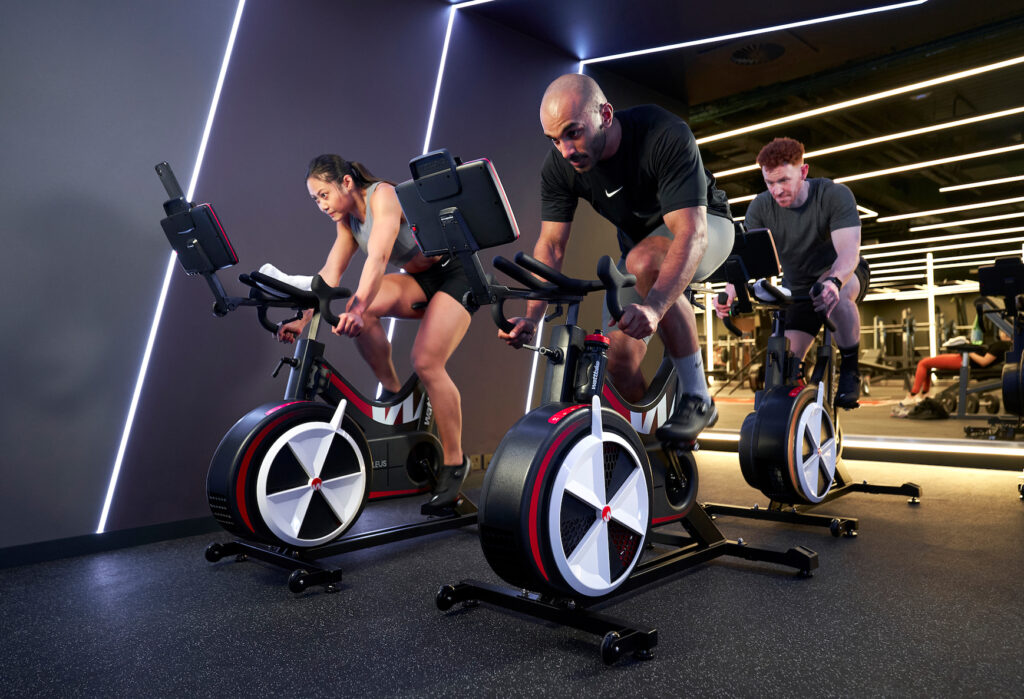
Although commercial Wattbikes still carry consoles, users can effectively push these into the background in favour of an app display if they choose, connecting to the Wattbike Hub app, the new subscription-based Wattbike Hub+ or one of a number of third-party apps. Both Wattbike apps unlock additional data, content features and, particularly in the premium version, personalisation.
“Apps are redefining and enhancing the ride, creating a premium rider experience”
Once connected, app and console run in parallel but the app takes control: it’s the app that shows your real-time workout data, and by carrying your profile and historical data with you, every workout is personalised, focusing on your preferred metrics as you work towards your goals.
“Recognising the shift towards apps, we’ve been investing in our digital product development for some time now,” says Crampton. “Apps are redefining and enhancing the ride, allowing us to prescribe and personalise training for even greater results. They’re creating a new, premium rider experience.”
Phones to the forefront
Meanwhile, “50 per cent of Stages bikes in the marketplace don’t have a console at all,” says Paddy Murray, VP of global marketing & international sales, as he highlights the uptake of Stages Studio Boost software at rhythm cycling venues.
“It doesn’t mean data isn’t used in these experiences: it just means collection is passive, putting the focus on the instructor, music and vibe. There’s no display of any kind and data isn’t used for motivation during class, although you can get an email afterwards that tells you how well your pedal stroke stayed on the beat of the music, for example.”
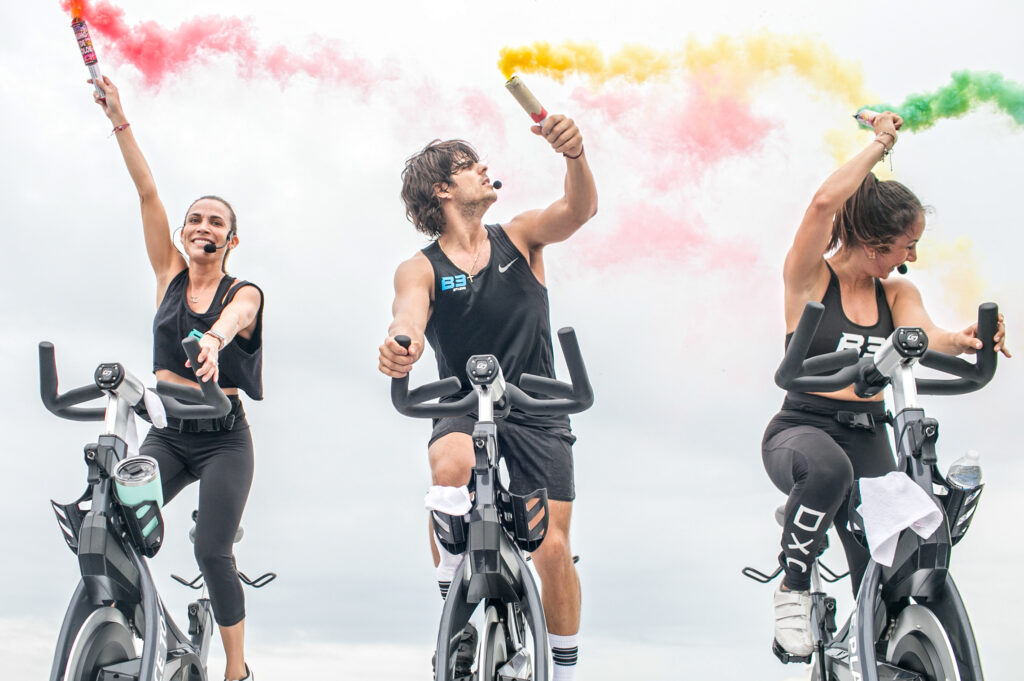
“50 per cent of our bikes in the marketplace don’t have a console at all”
He continues: “I don’t think apps will entirely replace consoles, but they will become the dominant method of collecting and/or displaying data. Consoles don’t know who you are, what you did last week or your fitness level, so they aren’t great at telling you how hard to work: they just display your current workout data. Meanwhile, phones are our constant companions and have such high-quality screens, data processing abilities, connectivity, useability, easily upgradable apps… It makes sense to put them at the heart of an intuitive class experience.”
A number of commercial Stages bikes therefore come with a crank arm-based power meter either as standard or as an optional add-on, which in turn connects via Bluetooth to the Stages Studio+ app. The real-time metrics are the same as on the console, but now you’re working with a device that can overlay your personalised zones, plus you hold your own data for post-class analysis.
A personalised experience
Over at Spinning®, three of the new Spinner bikes for 2023 have consoles. The rest – whether via a power crank, heart rate monitor and/or cadence sensor on the bike – can connect to Spinning apps on riders’ own mobiles or tablets, unlocking robust metrics, performance tracking and content.
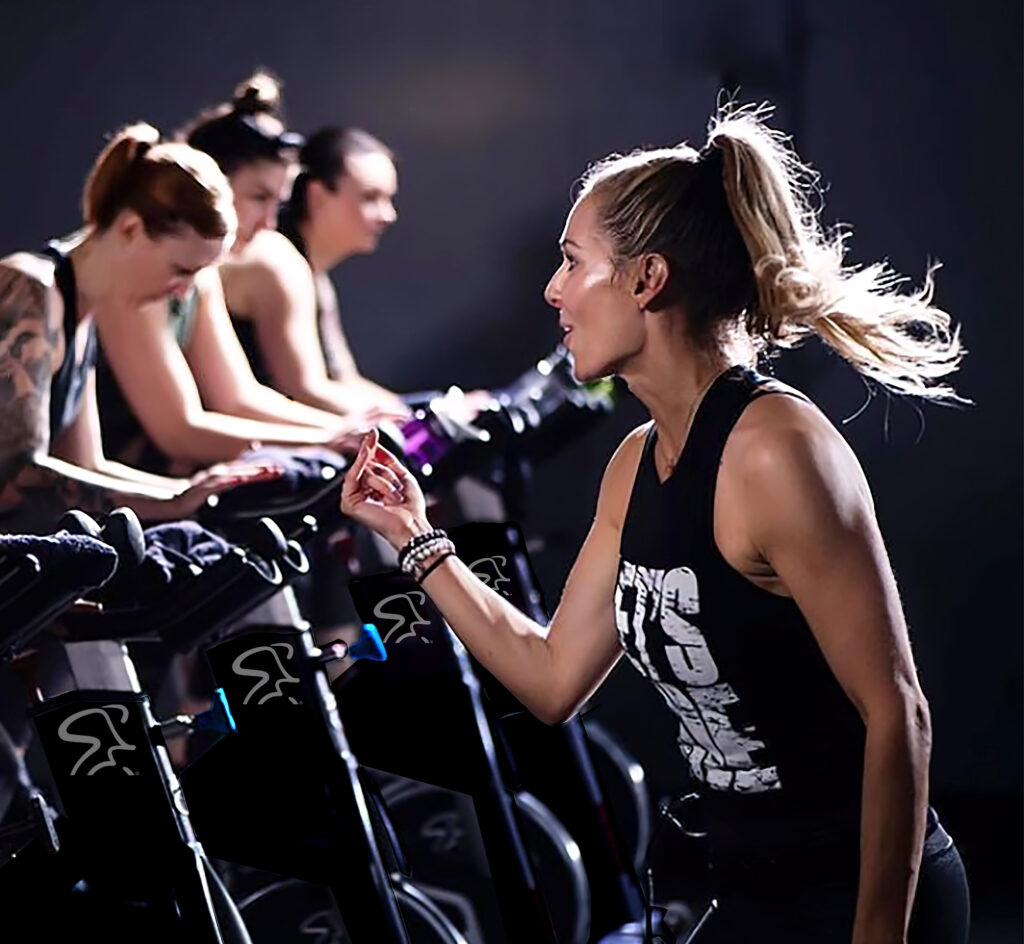
Athleticum’s Sarah Morelli, Spinning’s UK & Ireland distributor, explains: “The console and app pull from the same data sources, but while consoles work independently – they collect data, but are designed to clear it for the next rider – the app records your data and works directly with this. Personalisation therefore comes through the app.”
“The next step will be helping instructors move to class design based on personalisation”
She adds: “For some audiences, there will still be a place for bikes with consoles, allowing you to get on and ride with no need to connect: less tech-savvy individuals, for example, and school partnerships where data is protected. However, in this era of health-tech and post-pandemic health awareness, it’s important that we offer riders the ability to take their data with them, and to link with other health and fitness apps for a rounded view of their health data.
“The next step will be super-interesting, helping our instructors move from class design to class design based on personalisation for superior results – a win-win for studios and their members.”
Consoles – for now
Other manufacturers remain more focused on consoles, at least for now. Matrix Fitness has no console-free commercial bikes at this stage, and head of group exercise product Becky Jalbert believes demand for consoles will remain for the foreseeable future. Matrix does, however, have some bikes that can also connect to and share workout data with third-party apps, allowing users to track their performance and periodise workouts over time, as well as communicate progress to their physician where relevant.
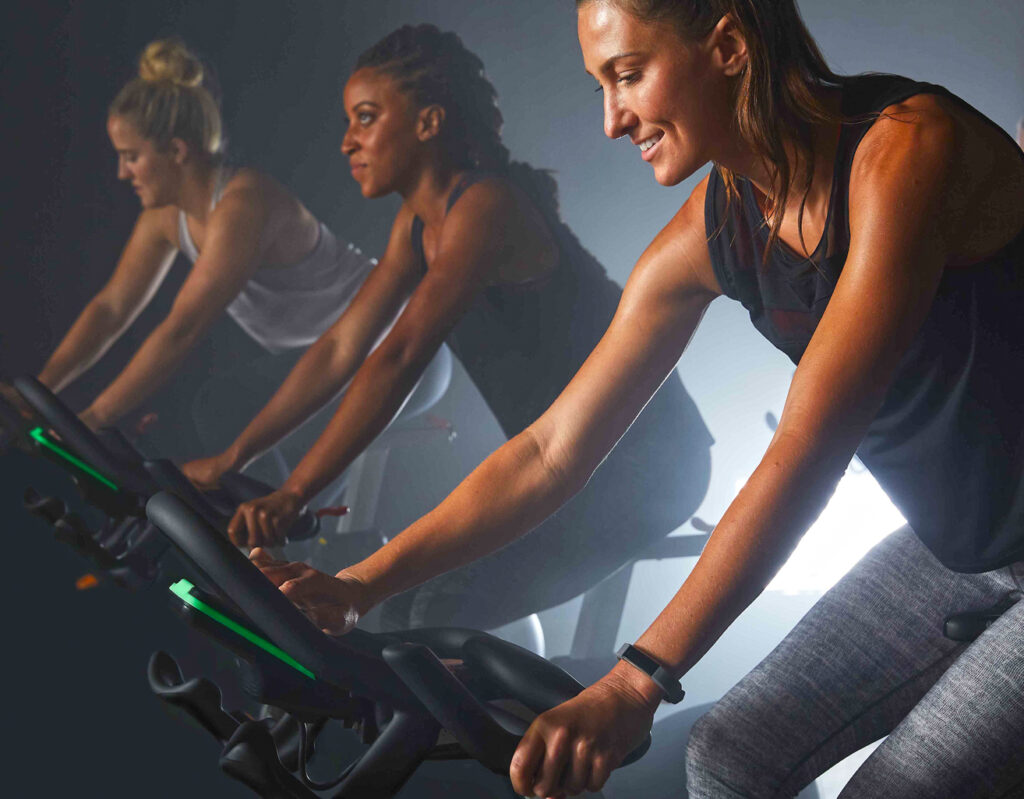
Similarly Schwinn, while offering two models of bike that can connect to an app, does not yet have its own cycling app. The ‘bring your own experience’ functionality of its console-free X Bike is therefore, at present, more readily embraced by solo riders and individual owners than by clubs and studios.
“In group cycle classes, if one person in the room is having a problem, it affects the experience for everyone,” says Travis Vaughan, Schwinn’s senior director of product management & technology. “The operators we work with therefore want to remove variables that might possibly create negative experiences, and today, that means the easy option is to buy a bike with the display built in.”
However, he adds: “Perhaps there is a future where riders can choose if they want the enhanced experience with app or simply ride without it. If/when we invest in creating an app to use with our bikes, it may shift the math on the experience. At the moment it feels it will be slower than we want it to be, but we’ll keep moving in this direction.”
Video

Conceived, powered and funded by BODY BIKE®, RIDE HIGH has a simple mission: to celebrate and champion the very best of indoor cycling, sharing ideas, stories and experiences from around the world to inspire the sector on to even bigger and better things. Subscribe for free by leaving your details below and we'll send indoor cycling's hottest news direct to your inbox three times a year.



